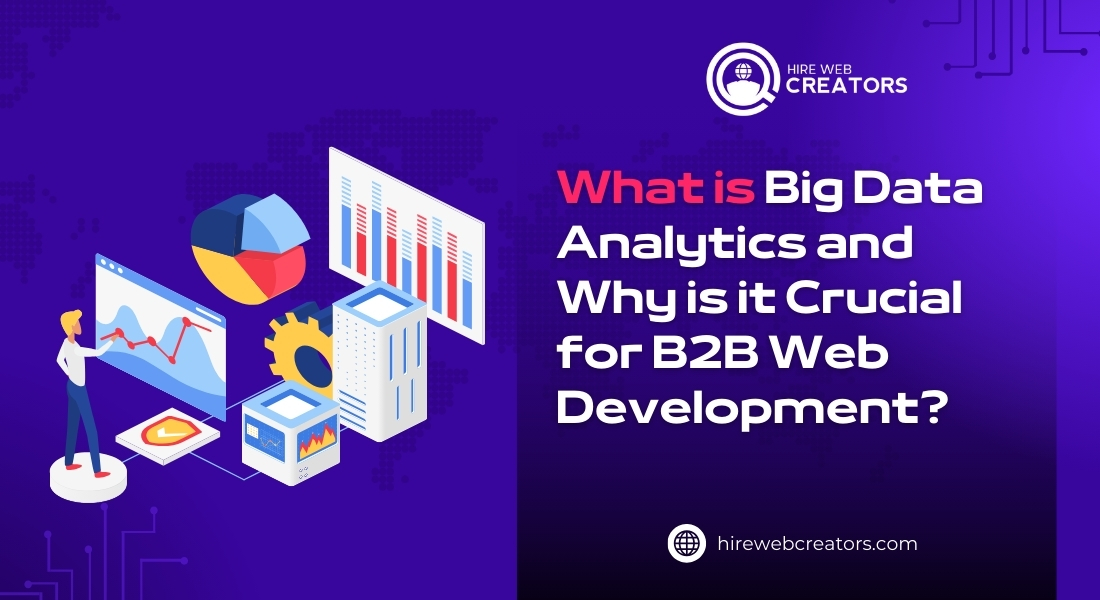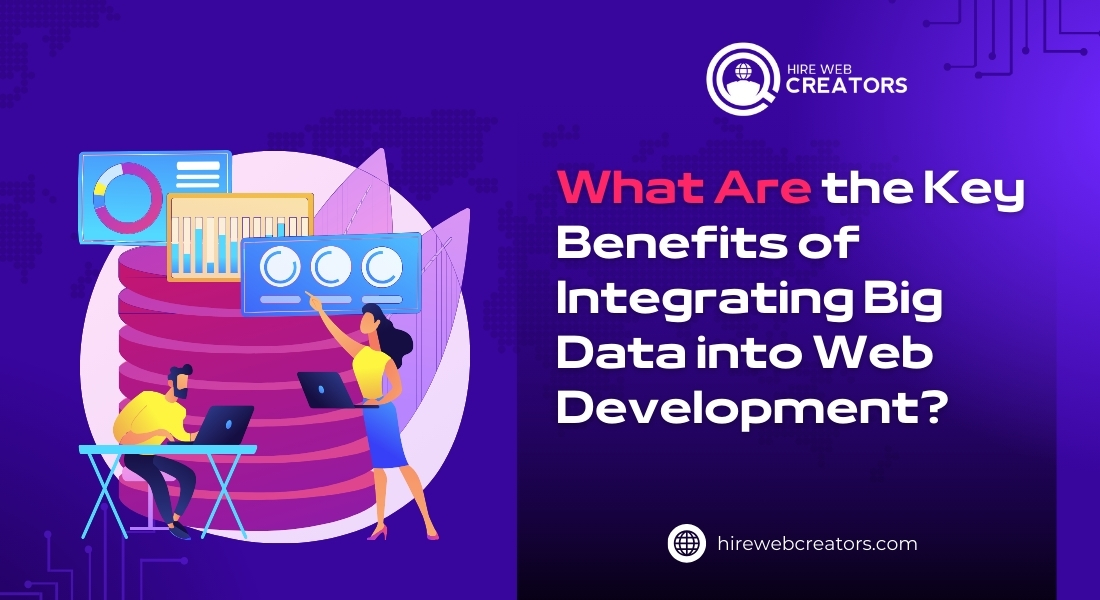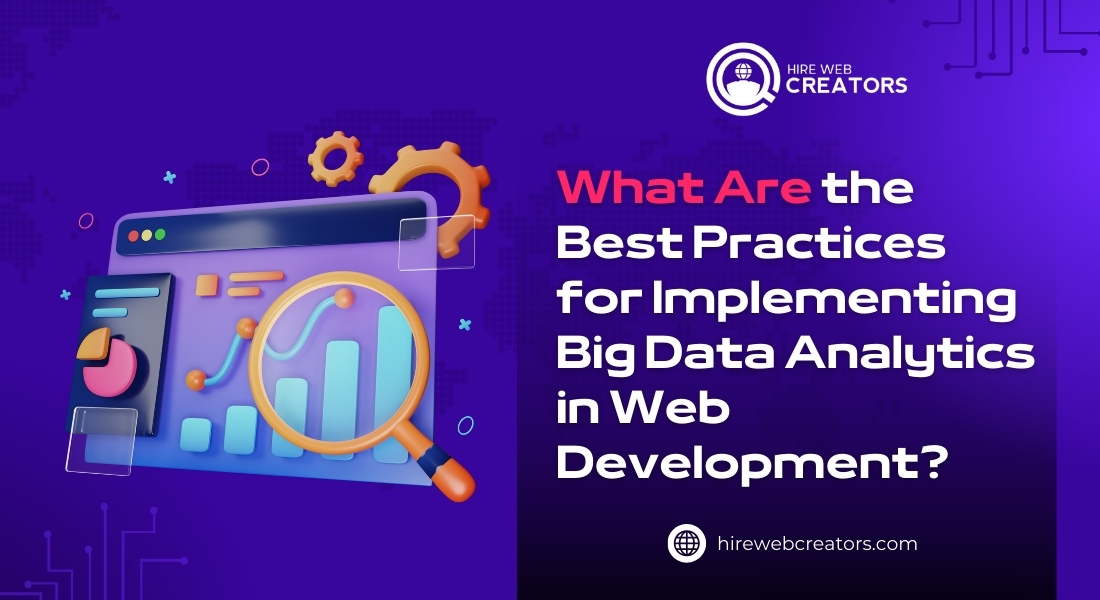

Mastering Big Data in Web Development: 12 Essential B2B Tips
Unlock the potential of Big Data in web development to supercharge your B2B site. Find out how to leverage analytics for better results!
Leveraging Big Data in web development is a game-changer for B2B companies. By integrating advanced analytics, businesses can unlock valuable insights, optimize website performance, and deliver personalized experiences that drive engagement and conversion. This blog explores how Big Data can revolutionize B2B web development, providing actionable strategies to enhance your online presence.
Big Data’s impact on web development extends beyond simple metrics; it offers a deep understanding of user behavior, preferences, and trends. From improving site speed and functionality to enabling data-driven design decisions, harnessing Big Data can significantly elevate the effectiveness of B2B websites. Dive in to discover the transformative potential of Big Data and how it can position your business for success in the competitive digital marketplace.
What is Big Data Analytics and Why is it Crucial for B2B Web Development?
Big Data analytics refers to examining vast and complex datasets to uncover hidden patterns, correlations, and insights that can drive business decisions. In B2B web development, integrating Big Data analytics is crucial for several reasons. By analyzing large volumes of data, businesses can better understand user behavior, optimize website functionality, and tailor their web presence to meet specific business needs and goals.

Understanding Big Data in Web Development
Big Data in web development involves collecting and analyzing data from various sources, including website interactions, user behavior, and market trends. This data is processed using advanced analytical tools and techniques to extract meaningful insights. For B2B companies, this means being able to understand how users interact with their websites, identify pain points, and improve the overall user experience. By leveraging Big Data, businesses can make informed decisions about design changes, content strategies, and marketing approaches that can lead to better engagement and conversion rates.
The Importance of Big Data Analytics for B2B Companies
For B2B web development, Big Data analytics is not just a trend but a strategic necessity. The ability to analyze large datasets allows businesses to:
- Personalize User Experiences: By understanding individual user preferences and behaviors, companies can create customized content and offers that resonate with their target audience.
- Optimize Website Performance: Insights gained from Big Data can help in identifying performance bottlenecks and optimizing site speed and functionality.
- Enhance Decision-Making: Data-driven decisions are more accurate and effective compared to intuition-based ones. Big Data provides a solid foundation for making strategic decisions in web development.
Challenges and Considerations
While Big Data in web development offers numerous benefits, it also comes with challenges. Companies must ensure they have the right tools and expertise to handle and analyze large datasets effectively. Additionally, data privacy and security are critical considerations. Ensuring compliance with regulations and safeguarding user data is essential to maintaining trust and credibility.
What is Big Data Analytics and Why is it Crucial for B2B Web Development?
Big Data in web development refers to examining vast and complex datasets to uncover hidden patterns, correlations, and insights that can drive business decisions. In B2B web development, integrating Big Data in web development is crucial for several reasons. By analyzing large volumes of data, businesses can better understand user behavior, optimize website functionality, and tailor their web presence to meet specific business needs and goals.
Understanding Big Data in Web Development
Big Data in web development involves collecting and analyzing data from various sources, including website interactions, user behavior, and market trends. This data is processed using advanced analytical tools and techniques to extract meaningful insights. For B2B companies, understanding Big Data in web development means being able to analyze how users interact with their websites, identify pain points, and improve the overall user experience. By leveraging Big Data in web development, businesses can make informed decisions about design changes, content strategies, and marketing approaches that can lead to better engagement and conversion rates.
The Importance of Big Data Analytics for B2B Companies
For B2B web development, Big Data in web development is not just a trend but a strategic necessity. The ability to analyze large datasets allows businesses to:
- Personalize User Experiences: By understanding individual user preferences and behaviors through Big Data in web development, companies can create customized content and offers that resonate with their target audience.
- Optimize Website Performance: Insights gained from Big Data in web development can help in identifying performance bottlenecks and optimizing site speed and functionality.
- Enhance Decision-Making: Data-driven decisions are more accurate and effective compared to intuition-based ones. Big Data in web development provides a solid foundation for making strategic decisions in web development.
Challenges and Considerations
While Big Data in web development offers numerous benefits, it also comes with challenges. Companies must ensure they have the right tools and expertise to handle and analyze large datasets effectively. Additionally, data privacy and security are critical considerations. Ensuring compliance with regulations and protecting user data is essential when integrating Big Data in web development.
What Are the Key Benefits of Integrating Big Data into Web Development?
Big Data in web development offers a range of key benefits that can transform how businesses approach their online presence. Integrating Big Data analytics allows companies to leverage vast amounts of information to gain actionable insights and drive strategic decisions. This approach enhances various aspects of web development, from improving user engagement to optimizing operational efficiency.

Enhanced Decision-Making Capabilities
Big Data analytics provides businesses with a wealth of information that enhances decision-making processes. By analyzing large datasets, companies can identify trends, patterns, and correlations that inform strategic choices. For instance, data on user behavior can reveal which features are most popular, allowing developers to focus on enhancing those aspects. The ability to make data-driven decisions rather than relying on intuition or limited information is a significant advantage in web development.
Improved User Engagement
Integrating Big Data into web development also leads to improved user engagement. Data-driven insights enable businesses to create personalized experiences that resonate with their audience. By understanding user preferences and behaviors, companies can tailor content, recommendations, and interactions to meet individual needs. This personalization enhances user satisfaction and increases the likelihood of repeat visits and conversions.
Optimized Website Performance
Another benefit of using Big Data in web development is the optimization of website performance. Analyzing data related to site speed, load times, and user interactions helps identify performance bottlenecks and areas for improvement. Companies can use these insights to streamline website functionality, enhance loading speeds, and ensure a smooth user experience. Optimizing performance not only improves user satisfaction but also contributes to better search engine rankings and higher conversion rates.
How Can Big Data Improve Website Performance and Speed?
Big data in web development plays a crucial role in improving website performance and speed, which are essential factors in providing a positive user experience. By leveraging large datasets, businesses can identify performance issues and implement solutions to enhance site efficiency.
Identifying Performance Bottlenecks
Big data in web development allows companies to pinpoint specific performance bottlenecks on their websites. By analyzing data on page load times, server response times, and user interactions, businesses can identify areas where performance is lagging. This information helps developers address issues such as slow-loading pages or unresponsive elements, leading to a more efficient and user-friendly website.
Enhancing Load Times and Site Efficiency
Improving load times and overall site efficiency is another benefit of using big data in web development. Data analytics provides insights into factors that impact load times, such as large media files or inefficient code. By optimizing these elements based on data-driven insights, businesses can reduce loading times and improve site performance. Faster load times not only enhance user satisfaction but also contribute to better search engine rankings and higher conversion rates, further illustrating the importance of big data in web development.
Monitoring and Adjusting Performance Metrics
Ongoing monitoring and adjustment of performance metrics are essential for maintaining optimal website speed. Big data in web development enables continuous tracking of performance indicators, allowing businesses to make real-time adjustments as needed. This proactive approach ensures that websites remain efficient and responsive, even as user traffic and content volume change over time. By consistently applying big data in web development practices, businesses can maintain a competitive edge in the digital landscape.
What Role Does Big Data Play in Personalizing B2B Web Content?
Big Data is instrumental in personalizing B2B web content, creating tailored experiences that resonate with individual users. By analyzing extensive datasets, businesses can gain insights into user preferences and behaviors, enabling them to deliver content that meets specific needs.

Tailoring Content to User Preferences
Personalization through Big Data involves tailoring content to match user preferences. By analyzing data on user behavior, companies can identify interests and preferences, allowing them to create relevant and engaging content. For example, if data shows that users are interested in specific industry topics, businesses can develop content that addresses those interests, leading to higher engagement and satisfaction.
Creating Targeted Marketing Campaigns
Big Data also enables the creation of targeted marketing campaigns based on user insights. By understanding user preferences and behaviors, businesses can design marketing strategies that reach the right audience with the right message. Targeted campaigns are more effective in driving engagement and conversions, as they resonate with users on a personal level.
Enhancing User Journey and Engagement
Personalizing web content with Big Data enhances the overall user journey and engagement. By providing relevant content and recommendations based on data-driven insights, businesses can guide users through a more satisfying and efficient experience. This personalized approach not only improves user satisfaction but also increases the likelihood of achieving business objectives such as lead generation and sales.
How Can Big Data Analytics Inform Better Design Decisions for B2B Websites?
Big data in web development plays a significant role in informing better design decisions for B2B websites by providing valuable insights into user behavior and preferences. By leveraging big data, businesses can make informed choices that enhance website design and functionality.
Understanding User Behavior and Preferences
Big data in web development enables businesses to understand user behavior and preferences, which is crucial for making informed design decisions. By analyzing data on how users interact with a website, companies can identify which design elements are effective and which may need improvement. This understanding allows designers to create interfaces that align with user expectations and preferences, ensuring that the website meets the needs of its audience.
Optimizing User Interface and Experience
Data-driven insights, derived from big data in web development, help optimize the user interface and experience by highlighting areas where design improvements are needed. For example, if big data reveals that users struggle with navigation or find certain features confusing, designers can make adjustments to enhance usability. Improving the user interface based on these insights leads to a more intuitive and enjoyable experience for visitors.
A/B Testing and Iterative Design
Big data in web development also supports A/B testing and iterative design processes. By testing different design variations and analyzing user responses, businesses can determine which design elements perform best. This iterative approach allows for continuous refinement and improvement of website design based on real user feedback and data-driven insights provided by big data in web development.
What Tools and Technologies Are Available for Big Data Analytics in Web Development?
Big Data analytics relies on a variety of tools and technologies that help businesses process and analyze large datasets effectively. These tools enable companies to extract valuable insights and apply them to web development strategies.
Data Processing Platforms
Data processing platforms are essential for handling and analyzing large volumes of data. Tools such as Apache Hadoop and Apache Spark provide the infrastructure needed to process big data efficiently. These platforms support distributed computing, allowing businesses to analyze vast datasets quickly and accurately.
Analytics and Visualization Tools
Analytics and visualization tools help businesses interpret and present data insights in a meaningful way. Tools like Google Analytics, Tableau, and Power BI offer features for tracking user interactions, visualizing data trends, and generating reports. These tools make it easier to understand data and make informed decisions based on the insights gained.
Customer Relationship Management (CRM) Systems
CRM systems integrated with Big Data analytics offer valuable insights into customer interactions and behaviors. Tools such as Salesforce and HubSpot provide data on customer engagement, preferences, and feedback, enabling businesses to tailor their web development strategies to better meet customer needs.
How Can Businesses Measure the Impact of Big Data on Their Website ROI?
Measuring the impact of Big Data on website ROI involves assessing how data-driven strategies contribute to business outcomes and profitability. Businesses can use various methods and metrics to evaluate the effectiveness of their Big Data initiatives.
Tracking Key Performance Indicators (KPIs)
Tracking key performance indicators (KPIs) is essential for measuring the impact of Big Data on website ROI. Metrics such as conversion rates, user engagement, and revenue growth provide insights into how data-driven changes are affecting business performance. By monitoring these KPIs, businesses can assess the effectiveness of their Big Data strategies and make adjustments as needed.
Analyzing Cost-Benefit Relationships
Analyzing cost-benefit relationships helps determine the financial impact of Big Data initiatives. Businesses should compare the costs associated with implementing and maintaining Big Data analytics tools with the benefits gained from improved performance and increased revenue. This analysis provides a clear picture of the return on investment and helps justify further investment in Big Data technologies.
Evaluating User Satisfaction and Retention
User satisfaction and retention metrics are important for measuring the impact of Big Data on website ROI. By analyzing data on user feedback, satisfaction levels, and retention rates, businesses can gauge how effectively their Big Data strategies are improving the user experience. High levels of satisfaction and retention indicate that data-driven changes are positively impacting ROI.
What Are the Best Practices for Implementing Big Data Analytics in Web Development?

Implementing Big Data analytics in web development requires following best practices to ensure effective and efficient use of data. These practices help businesses maximize the benefits of Big Data and avoid common pitfalls.
Establishing Clear Objectives and Goals
Establishing clear objectives and goals is a fundamental best practice for implementing Big Data analytics. Businesses should define what they aim to achieve with their data-driven strategies, such as improving user engagement or optimizing performance. Clear goals provide direction and help focus efforts on achieving specific outcomes.
Choosing the Right Tools and Technologies
Selecting the right tools and technologies is crucial for successful Big Data implementation. Businesses should evaluate and choose tools that align with their data needs and technical requirements. Considerations include data processing capabilities, analytics features, and integration with existing systems.
Ensuring Data Quality and Security
Ensuring data quality and security is essential for effective Big Data analytics. Businesses must implement measures to maintain data accuracy, completeness, and consistency. Additionally, safeguarding data against breaches and unauthorized access is critical to protecting user privacy and maintaining trust.
How Do SmartDataCollective and BuiltIn.com Utilize Big Data for Web Development Insights?
SmartDataCollective and BuiltIn.com are valuable sources of information on how Big Data is utilized in web development. These platforms offer insights into the latest trends, tools, and strategies for leveraging Big Data in web development.
SmartDataCollective Insights
SmartDataCollective provides expert analysis and articles on Big Data trends and technologies. The platform offers insights into how businesses can use Big Data to improve web development strategies, including case studies and best practices. By exploring content on SmartDataCollective, businesses can gain a deeper understanding of how to apply Big Data effectively.
What Challenges Might Businesses Face When Leveraging Big Data in Web Development?
Leveraging Big Data in web development presents several challenges that businesses must address to ensure successful implementation. Understanding these challenges helps companies prepare and develop effective strategies for overcoming them.

Data Integration and Management Issues
Integrating and managing large volumes of data can be challenging. Businesses may face difficulties in consolidating data from various sources and ensuring consistency across datasets. Effective data management practices and tools are essential for overcoming integration issues and maintaining data quality.
Technical and Resource Constraints
Technical and resource constraints are common challenges in implementing Big Data solutions. Businesses may encounter limitations related to data processing capabilities, storage requirements, and technical expertise. Investing in the right tools and technologies, as well as building a skilled team, can help address these constraints.
Privacy and Compliance Concerns
Privacy and compliance concerns are critical when dealing with Big Data. Businesses must adhere to data protection regulations and ensure that user data is handled securely. Implementing robust data privacy practices and staying informed about regulatory requirements are essential for mitigating compliance risks.
How Can Companies Overcome Common Pitfalls in Big Data Integration?
Integrating Big Data into web development strategies presents several challenges that can impede success if not addressed properly. Companies must navigate common pitfalls to effectively leverage Big Data and achieve their business objectives.
Addressing Data Quality Issues
Data quality is a critical factor in successful Big Data integration. Poor data quality can lead to inaccurate insights and flawed decision-making. To overcome this pitfall, companies should implement robust data governance practices that ensure data accuracy, consistency, and completeness. Regular data cleansing and validation processes help maintain high data quality and improve the reliability of analytics outcomes.
Managing Data Complexity and Volume
Big Data often involves managing vast amounts of complex information from diverse sources. This complexity can make data integration and analysis challenging. To address this issue, companies should invest in scalable data management platforms that can handle large volumes and various types of data. Leveraging advanced technologies such as data lakes and cloud-based solutions can streamline data integration and processing, making it easier to manage and analyze complex datasets.
Ensuring Proper Data Security and Privacy
Data security and privacy are paramount in Big Data integration. Companies must ensure that sensitive information is protected from unauthorized access and breaches. Implementing strong data encryption, access controls, and compliance with data protection regulations are essential practices. Regular security audits and updates help identify and address potential vulnerabilities, ensuring that data remains secure throughout the integration process.
Building a Skilled Team
Successful Big Data integration requires a skilled team with expertise in data analytics, engineering, and management. Companies should invest in training and development to build the necessary skills within their teams. Hiring experienced professionals or partnering with specialized consultants can also provide the expertise needed to navigate complex data integration tasks effectively.
Fostering a Data-Driven Culture
Creating a data-driven culture is crucial for overcoming common pitfalls in Big Data integration. Companies should promote the use of data in decision-making processes and encourage employees to adopt data-centric approaches. By fostering a culture that values and leverages data, businesses can enhance the effectiveness of their Big Data initiatives and drive better outcomes.
Aligning Big Data Strategies with Business Goals
Aligning Big Data strategies with business goals ensures that data initiatives support overall objectives and provide tangible value. Companies should clearly define their goals and objectives for Big Data integration, ensuring that data analysis efforts are focused on achieving specific outcomes. Regularly reviewing and adjusting strategies based on performance metrics helps maintain alignment and maximize the benefits of Big Data integration.
In conclusion, Harnessing Big Data in web development is a transformative strategy for B2B companies seeking to enhance their online presence and drive business success. By leveraging Big Data analytics, businesses gain invaluable insights into user behavior, preferences, and performance metrics. This data-driven approach enables companies to optimize website performance, personalize user experiences, and make informed design decisions that align with their strategic goals. The integration of Big Data into web development not only improves operational efficiency but also strengthens competitive positioning in a rapidly evolving digital landscape.
As companies continue to explore and implement Big Data solutions, it is crucial to address challenges such as data quality, security, and integration complexities. By adhering to best practices and fostering a data-driven culture, businesses can effectively leverage Big Data to achieve their objectives and deliver exceptional value to their customers. Embracing Big Data is not just about keeping up with trends but about strategically positioning a company for long-term growth and success in the digital age.
